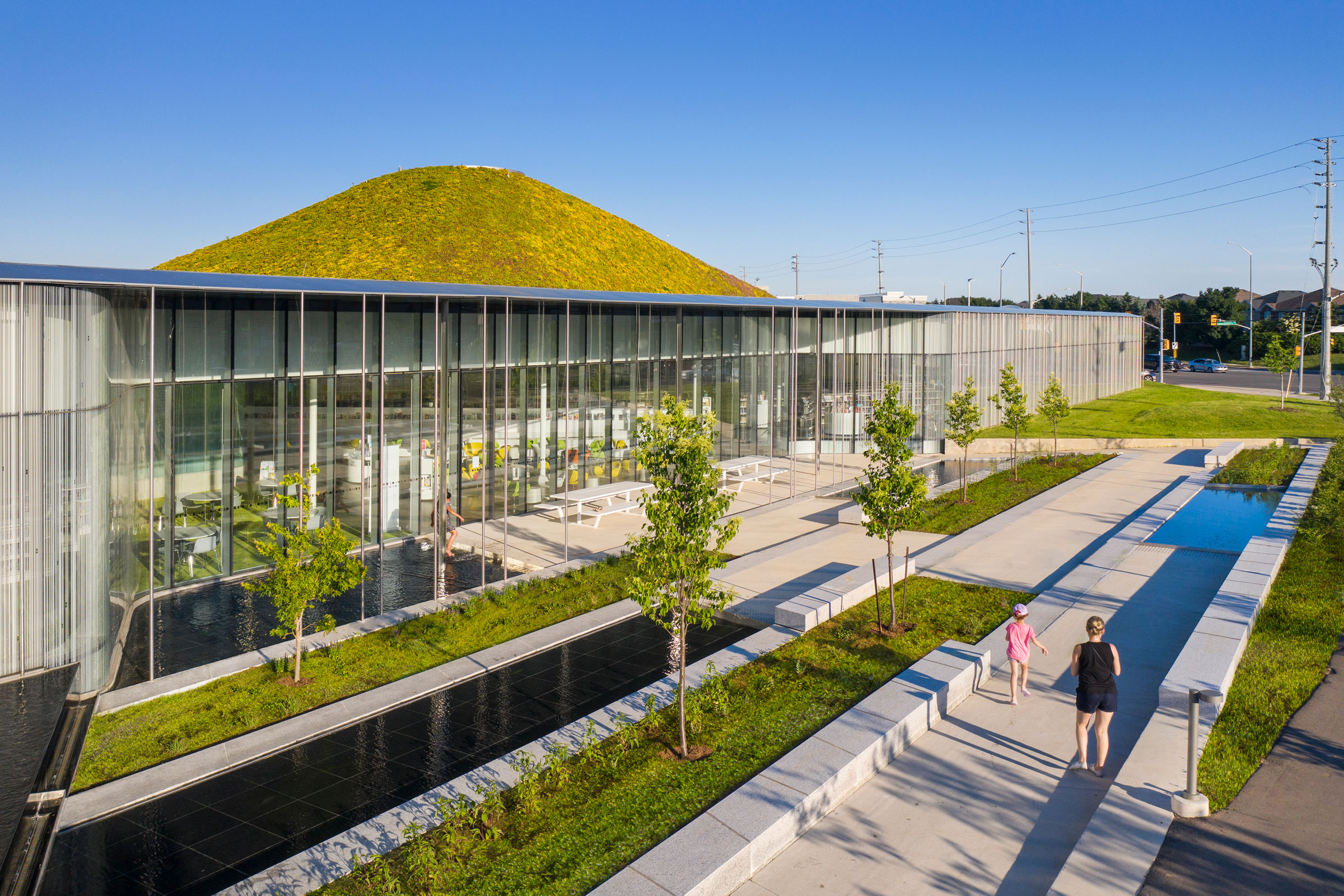Story at a glance:
- Libraries all over the globe are finding more ways to engage with the community while protecting the environment.
- Snøhetta and Stantec designed the Charles Library so natural light reaches 90% of its occupied areas.
- William Rawn Associates renovated the 1895 Boston Public Library with LED lights, low-flow plumbing, and more.
Every book you can imagine, access to endless information, community services—what do you think of when you think of a library today? What about green libraries?
Modern libraries are so much more than places to check out books, though they’re certainly that, too, and we’re grateful. But some of the best libraries are also community spaces, acting as hubs for cultural programming, education, children services, and more.
As anchors in their cities, libraries new and old should also be built to last. We’ve come to depend on these institutions all over the world, and architects have told us it’s become increasingly important that the design of these buildings be sustainable.
But what is a green library exactly?
According to the International Federation of Library Associations, green libraries are “designed to minimize negative impact on the natural environment and maximize indoor environmental quality by means of careful site selection, use of natural construction materials and biodegradable products, conservation of resources, and responsible waste disposal,” and that’s just to begin with.
We think the best libraries should also stand the test of time, built with sustainable building materials that are durable.
Some of our favorite green libraries also incorporate clever daylighting solutions, have multiple methods of bringing the community together, incorporate energy-efficient HVAC, and more. These are some of our favorite standout green libraries.
Springdale Library, Toronto
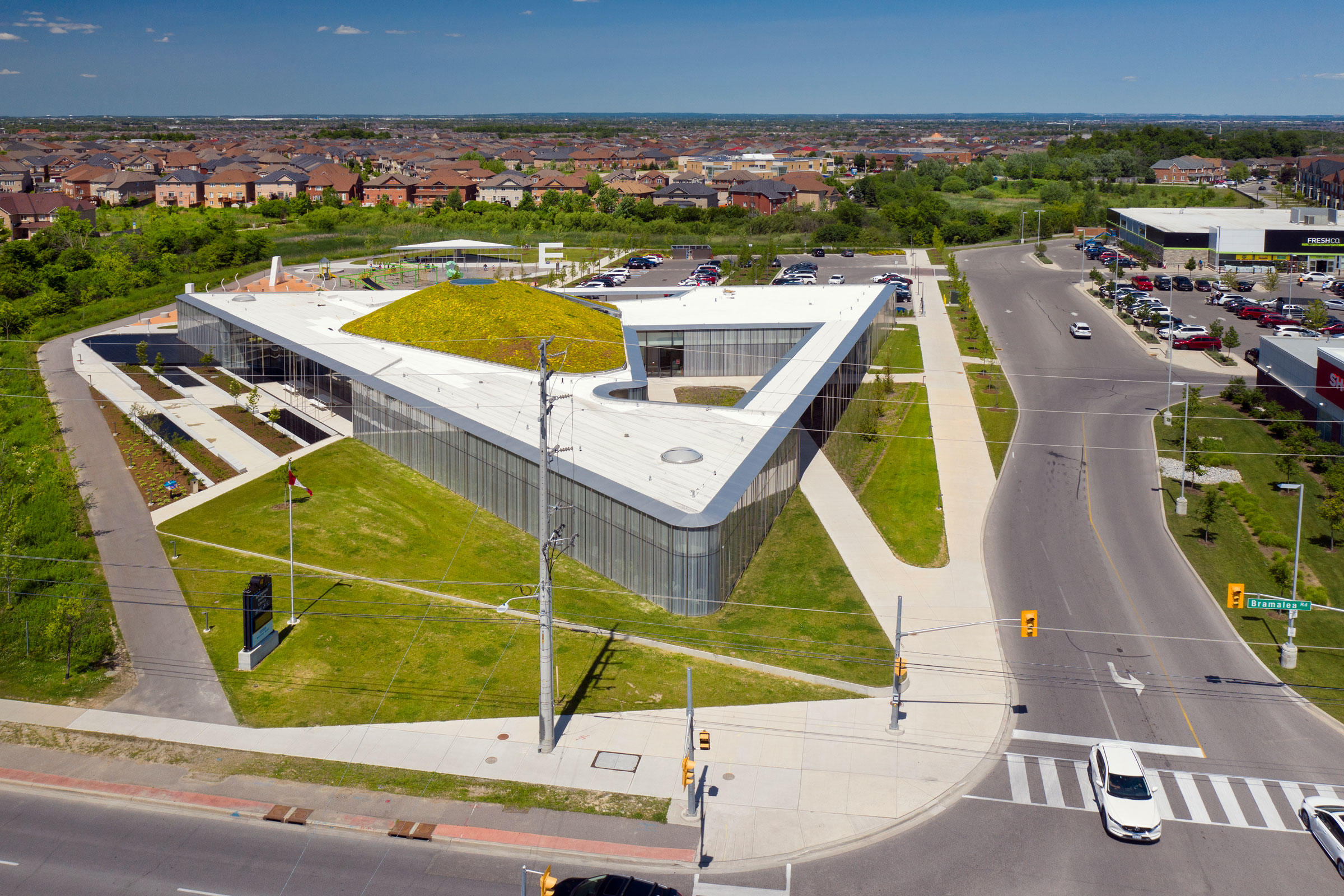
RDH Architects designed the public library, garden, park, and splash pad in Brampton to create an experiential relationship to the project’s greenfield setting—complete with undulating, organic sectional topography. Photo by Nic Lehoux
Next to a park in the Toronto suburbs, Springdale Library is alive with color and natural light. It has a green roof and uses water reclamation strategies and geothermal heating. The surrounding landscape inspired RDH Architects to design the project to be both eye-catching and organic. A nearby remain inspired the building’s fluid architecture and its surrounding green spaces, which allow the library to blend within its environment.
“We were trying to deal with sustainability in a poetic architectural way, as well as being performative,” Tyler Sharp, principal and design director at RDHA, previously told gb&d.
Inside, Sharp and the design team worked to create an environment of exploration. Like the exterior, much of the library’s interiors also draw inspiration from the surrounding scenery. An organic, calming color palette of greens and yellows is used throughout, while globular pendant lights and embedded LED lights create a planetary, starry sky above stacks of books and reading areas. In the children’s area, a moss-like carpet backs up to the outer reflecting pools, blurring the boundaries of inside and out.
Hayward Public Library, Hayward, CA
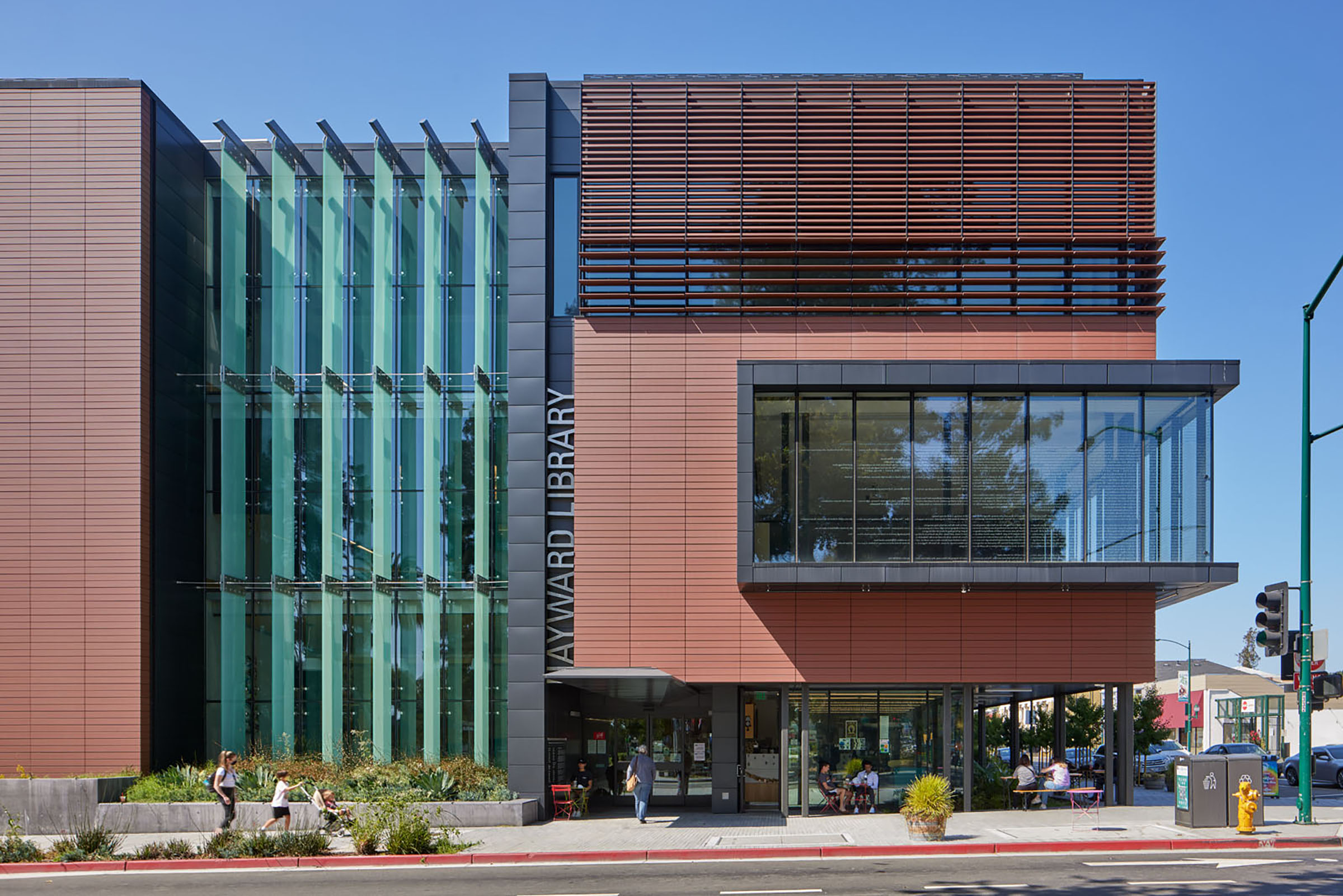
The library’s facade features an open joint red terra-cotta rain screen, matching the color of the city’s historically brick buildings. Photo courtesy of Noll & Tam Architects
Noll & Tam Architects designed the Hayward Public Library to meet net zero goals, optimizing natural sunlight and looking beyond the site for energy production and water reuse. They installed additional solar panels on the municipal parking garage next door to supplement the building’s energy production. Underneath the building, a 400,000-gallon cistern collects rainwater for reuse.
The library’s facade features an open joint red terra-cotta rain screen, matching the color of the city’s historically brick buildings. Flexible design was a key goal of the project, as the team hope to keep the building alive and relevant for many years to come. “I think it could continue to serve as a library for the next century quite easily. But it will need to adapt,” Scott Salge, principal at Noll & Tam, previously told gb&d.
Winthrop Library, Winthrop, WA

The design team shifted window openings, doorways, overhangs, and a slatted wooden scrim to best control heat gain and glare during the Methow Valley’s arid summers. Photo by Benjamin Drummond
Johnston Architects designed this library in Washington state to be a community hub that can double as a place pf refuge in times of wildfire and other extreme weather events. “The area is impacted by climate change in the form of wildfires and other extreme weather events—increasing the need for a safe, clean environment for locals to gather during smoky, extremely hot or cold seasons,” architect Harmony Cooper told gb&d. “The library was thoughtfully designed as a refuge from the elements during these intense but increasingly common periods. The new library’s goal was to satisfy these needs. Upon completion the project was met with enthusiastic community support.”
The main library space is one large open room with high ceilings and extended windows, allowing natural light to pour in. We used technology developed in-house by design technologist Shane Leaman to study the proposed design’s daylighting, glare, solar heat gain, and energy use. As a result the team shifted window openings, doorways, overhangs and added slatted wooden scrim to minimize heat gain and glare during the Methow Valley’s summers while still allowing light to peek through without significant energy loss.
Temple University’s Charles Library
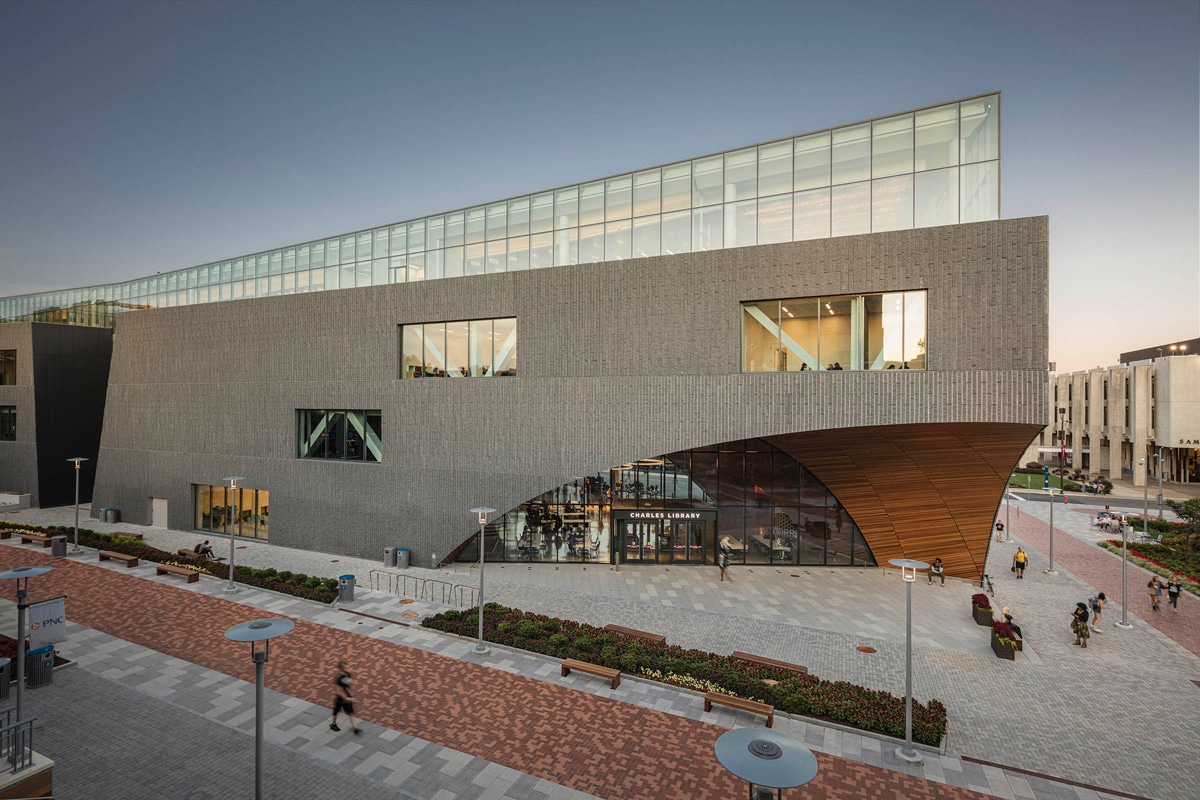
Temple University’s Charles Library. Photo by Michael Grimm
Snøhetta and Stantec designed Temple University’s new Charles Library, completed in August 2019, with an impressive green roof and expansive atrium lobby, all set on a textured granite base.
The four-story, 220,000-square-foot library has natural light in 90% of its occupied areas, reducing the amount of artificial light required.
“Snøhetta was looking for large glazed windows to increase the transparency of looking into the building. The side benefit of that is that we’re bringing in natural light to 90% of the occupied areas,” Scott Sullivan, principal architect at Stantec, told gb&d.
“All of our lighting inside the building has either a combination of photoelectric sensing or occupancy sensing. If it’s a nice sunny day, the lights won’t turn on. If it’s a cloudy day or night, the lights will then turn on based on occupancy or darkness levels.”
Austin Central Library
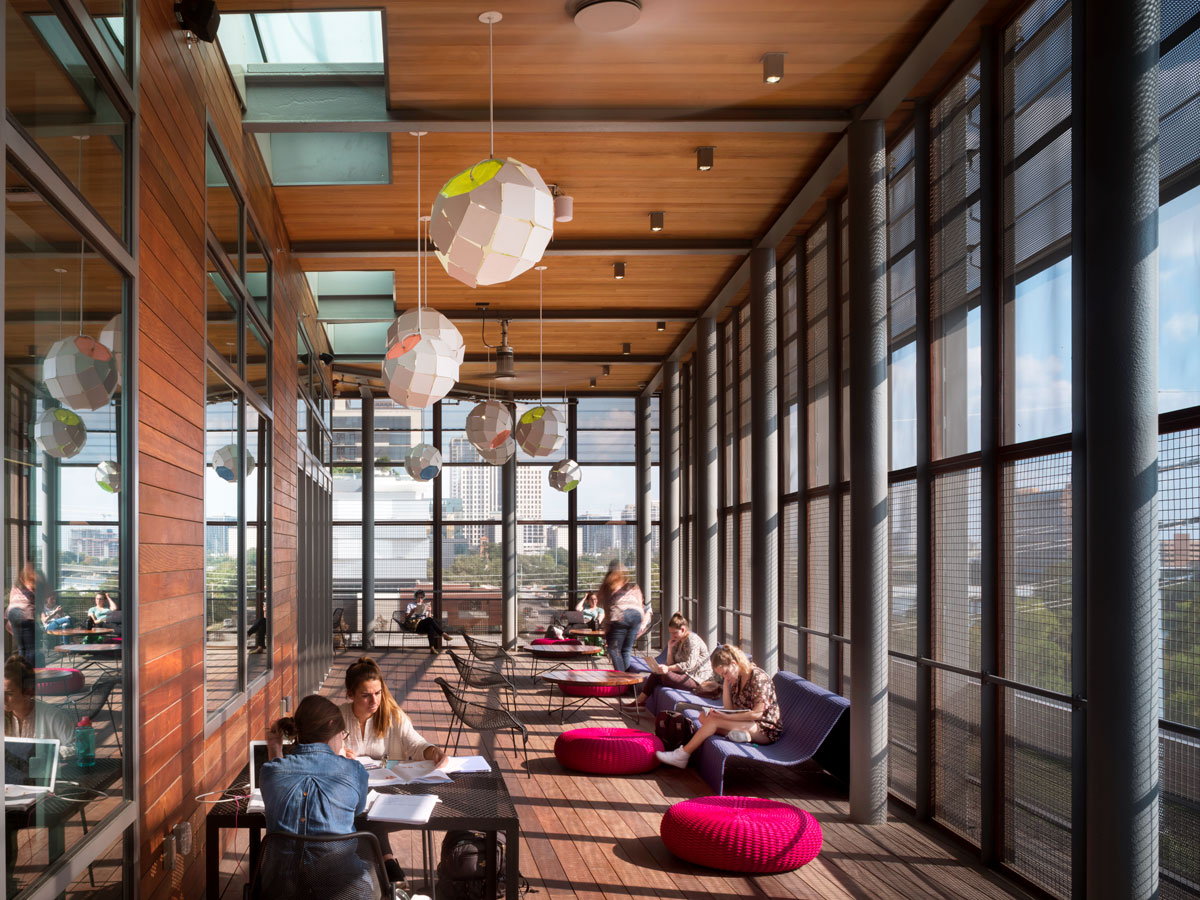
The LEED Platinum Austin Central Library emphasizes daylighting. Photo courtesy of Lake|Flato
Daylighting is also emphasized at the LEED Platinum Austin Central Library, designed by Lake|Flato and Shepley Bulfinch.
The 198,000-square-foot facility has a six-story atrium at its core that provides daylight to more than 80% of the library’s regularly occupied spaces.
“The presence of daylight makes people feel happy and more productive. It makes people want to be there,” David Lake, principal in charge for Lake|Flato, told gb&d.
Before ever breaking ground the architects made models to explore light in the space.
“We took the models outside and tried all different configurations. We wanted to harvest the light evenly around the building without glare but still have a library that could be flexible in the future,” Lake says. “It was our biggest challenge.”
Boston Public Library
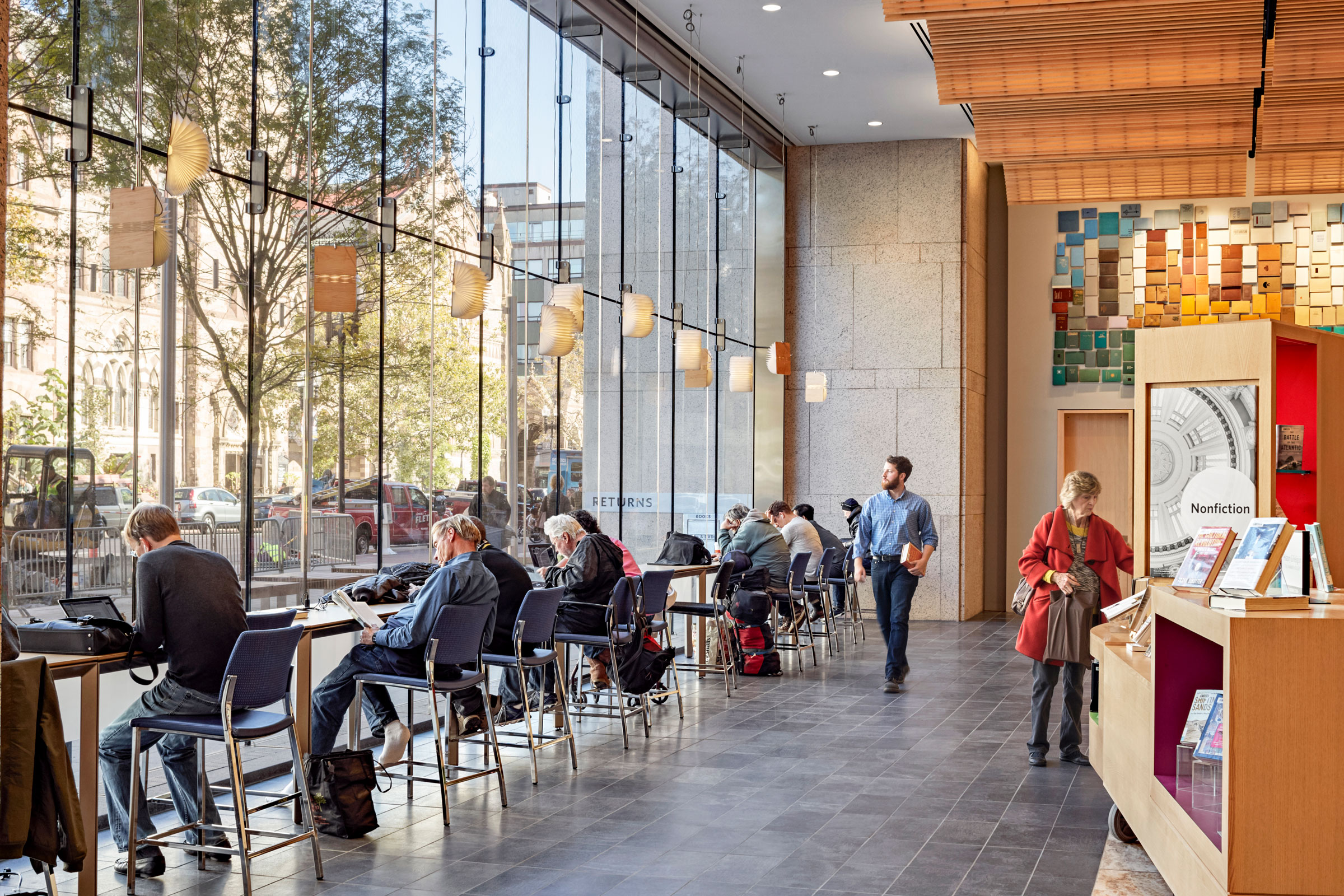
Inside the renovated Boston Public Library. Photo courtesy of William Rawn Associates
Beyond natural light, of which there is also plenty in this renovation, you’ll find a beautiful 1895 building with surprisingly modern amenities and sustainable design, thanks to William Rawn Associates.
Completed in 2016, the renovation shows us what historic libraries can be, with a design that both preserves history while also becoming a community hub with multiple, updated entrances. A light-filled space spills out into a new public plaza, complete with Wi-Fi and outdoor seating on one of Boston’s liveliest thoroughfares.
“This project creates a new civic idea for public libraries—with a heightened sense of being open, welcoming, and seamlessly connected to the city streets,” Cliff Gayley, principal architect on the project, told gb&d in the initial interview.
Beyond new LED lights and increased daylight all around, the design team also installed low-flow plumbing fixtures, occupancy sensors, and VAV (Variable Air Volume) boxes to reduce energy and conditioned air usage as part of the project.
Tulsa Library
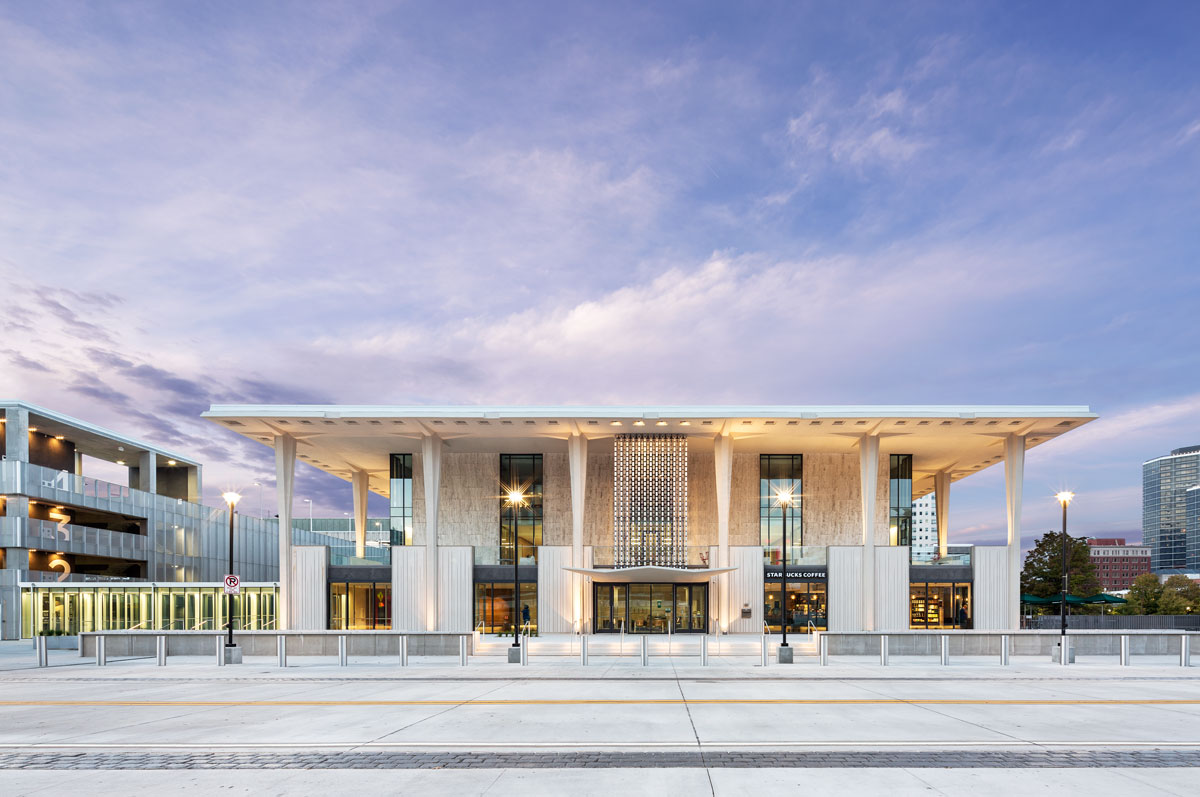
Inside this Tulsa Library, a fully automated lighting system utilizes daylight harvesting, scheduling, and vacancy and occupancy sensors. Photo by Lara Swimmer
In Oklahoma, the reimagined Tulsa Library includes updated HVAC alongside historic spaces as MSR renovated the building to bring it into the 21st century.
“The historic quality of the space was important and the detail it carried. There were a lot of great things we did not want to lose,” says Dagmara Larsen, project manager at MSR, in an interview with gb&d.
The team worked to maintain the look of the existing 145,000-square-foot structure as much as possible by keeping the roof, balcony, entryway, and other aesthetic details the same. They added glass study cubes to the balcony to increase daylight, utilizing a space that was once unusable.
Now the HVAC system runs on frictionless bearing chillers, a heat-recovery chiller, and dual wheel ventilation air handlers. A fully automated lighting system utilizes daylight harvesting, scheduling, and vacancy and occupancy sensors.
Virgilio Barco Library

Photo courtesy of Taller de Arquitectura de Bogotá
In Bogotá the BiblioRed project got off the ground with services at the Virgilio Barco Library, designed by Rogelio Salmona S.A., and other libraries., in the eary 2000s.
“They made four big libraries in parks in areas that used to be dangerous or for lower income people,” saso María Elvira Madriñán, widow of famous Colombian architect Rogelio Salmona and herself a leader in architecture, share with gb&d. “[Before] there was one library downtown. Many kids didn’t have the access to go downtown to the library, so these projects started to give the kids the possibility to access to books and culture.”
Madriñán says the great network of libraries managed to have wide coverage, complemented by a network of small libraries in schools and colleges to reach all of the city.
The Virgilio Barco Public Library was built inside a park designed by Salmona, with pedestrian and bike paths, canals, lakes, and native trees. In addition to being a place of learning and community, the project emphasized the issue of water management. The UNESCO World Heritage Centre site makes great use of rainwater by integrating it into the building. According to UNESCO, the project challenges the concept of contemporary public space as it incorporates meeting places and open access so all can enjoy the space, whether they want to take a walk in nature or go inside and read.
Tianjin Binhai Library

Inside Tianjin Library. Photo by Ossip van Duivenbode, MVRDV
Incredible daylighting and two rooftop patios make this library in China stand out.
The Tianjin Binhai library is truly a green library that makes you stop and stare, asking, “Was this made for Instagram?” as it’s almost too beautiful not to photograph.
Designed by MVRDV and the Tianjin Urban Planning and Design Institute, the 363,000-square-foot space was commissioned as part of a plan to create a cultural district in the city. The library is surrounded by four other cultural buildings, all connected by a glass-covered public corridor. A public park sits in front of the library.
Terraced bookshelves wrap the walls while also being represented on the outside—each level doubles as a louvre, allowing light and air to flow through. Glass walls in the front of the library open to the park outside to allow for nature views and enhanced daylight.

